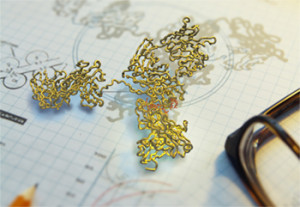 In a special issue of mAbs, Guest Editor Zita Schneider, D.V.M., Ph.D., Texas A&M Health Science Center, has compiled 12 articles describing recent results obtained about the neonatal Fc receptor, FcRn. All articles can be freely downloaded for a limited time. As a regulator of immunoglobulin G (IgG) and albumin homeostasis and a modulator of immune functions, this receptor has been attracting the interest of the scientific community and has become an unavoidable factor for consideration in the development of IgG- and albumin-based diagnostic and therapeutic reagents.
In a special issue of mAbs, Guest Editor Zita Schneider, D.V.M., Ph.D., Texas A&M Health Science Center, has compiled 12 articles describing recent results obtained about the neonatal Fc receptor, FcRn. All articles can be freely downloaded for a limited time. As a regulator of immunoglobulin G (IgG) and albumin homeostasis and a modulator of immune functions, this receptor has been attracting the interest of the scientific community and has become an unavoidable factor for consideration in the development of IgG- and albumin-based diagnostic and therapeutic reagents.
Burvenich et al. identified important amino acids playing a role in FcRn-IgG interaction, whereas Hironiwa et al. showed efficient antigen drop-off and IgG recycling utilizing calcium-dependent antigen-antibody binding. Ying and colleagues provided a tool to increase the transcytosis and half-life of engineered antibody domains through an FcRn-binding motif, whereas Meyer et al. utilized the albumin-binding characteristics of FcRn to generate IgA molecules with elongated half-life. Adams et al. used an anti-albumin Fv domain to extend the half-life of an Fab fragment, and Davé et al. used this domain to generate an Fab-dsFv bispecific antibody format.
FcRn can also serve as a screening tool for antibody selection as demonstrated by Souders et al. who developed a novel FcRn-binding biolayer interferometry assay, while Fan and colleagues used online peptide immune-affinity chromatography coupled with high resolution mass spectrometry to determine human FcRn expression levels in transgenic (Tg) mice and Avery et al. characterized these human FcRn Tg mice with respect to mAb pharmacokinetics (PK) prediction. Unverdorben et al. provided details of the PK of various Fc fusions compared to IgG molecules, Kelly et al. proved that FcRn-independent antigen-independent nonspecific interactions can also play a role in antibody PK, and Datta-Mannan et al. investigated several properties of mAbs in order to optimize PK parameters.
These articles provide valuable details to explore the possibilities offered by utilizing the functions of FcRn.
Not a member? Please join!
Membership is free for employees of the Society’s corporate sponsors.


